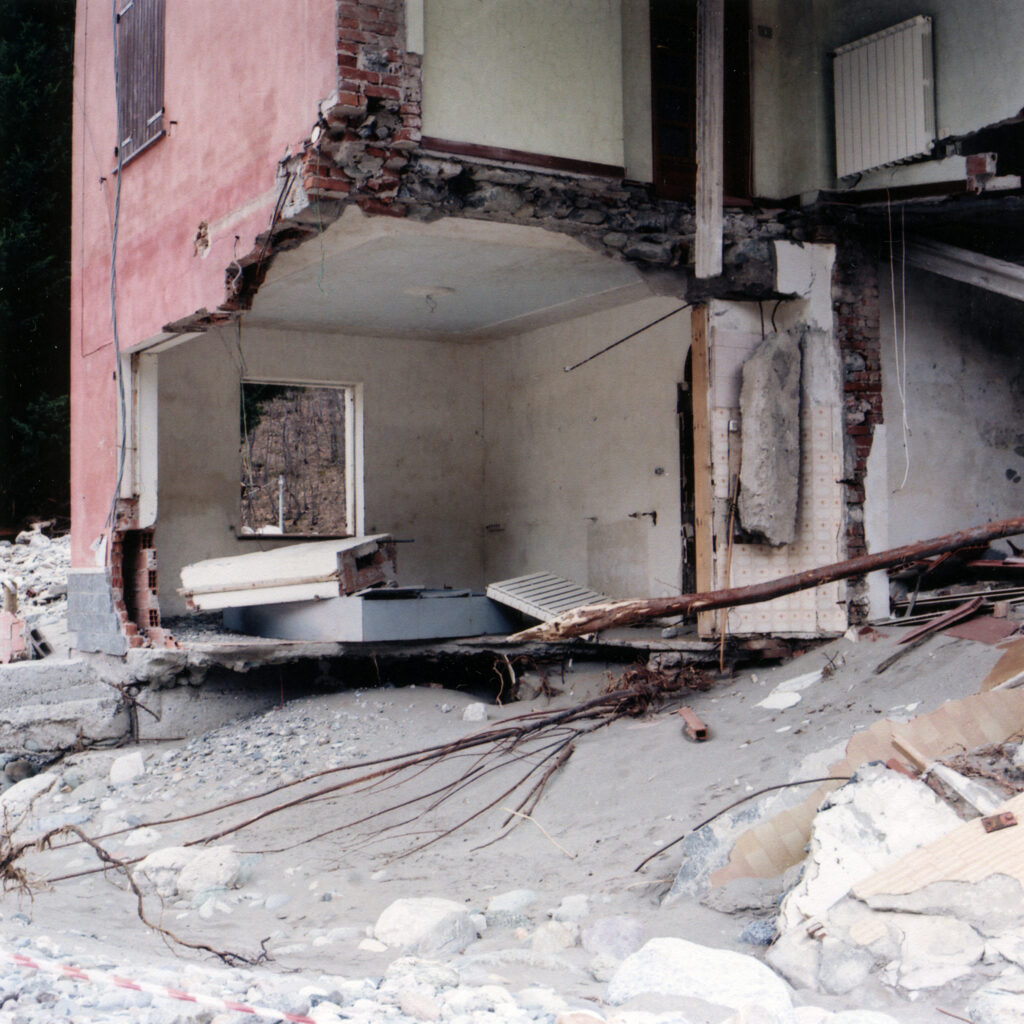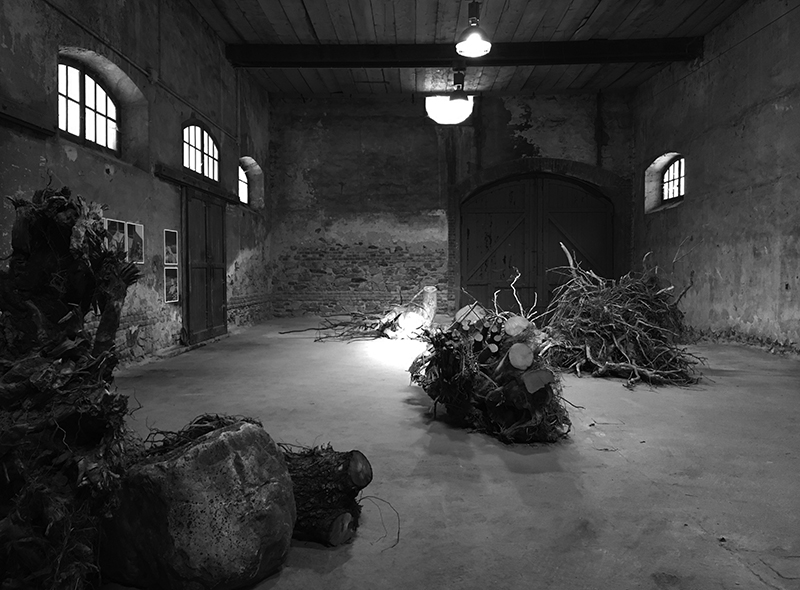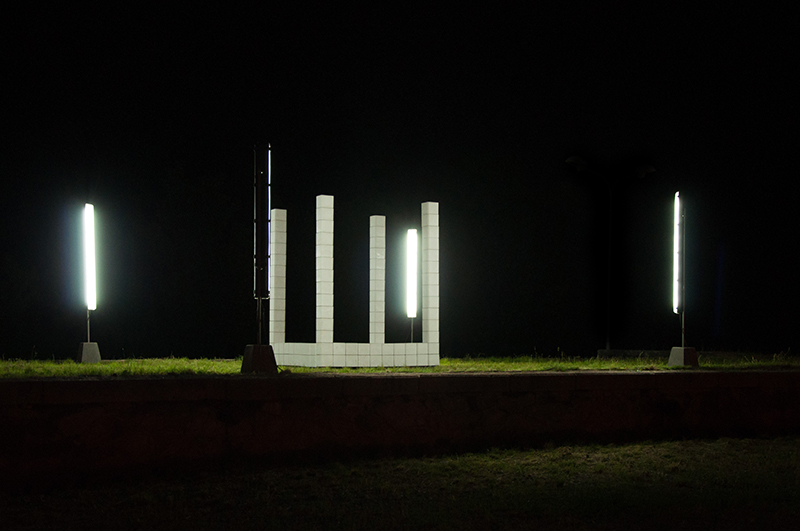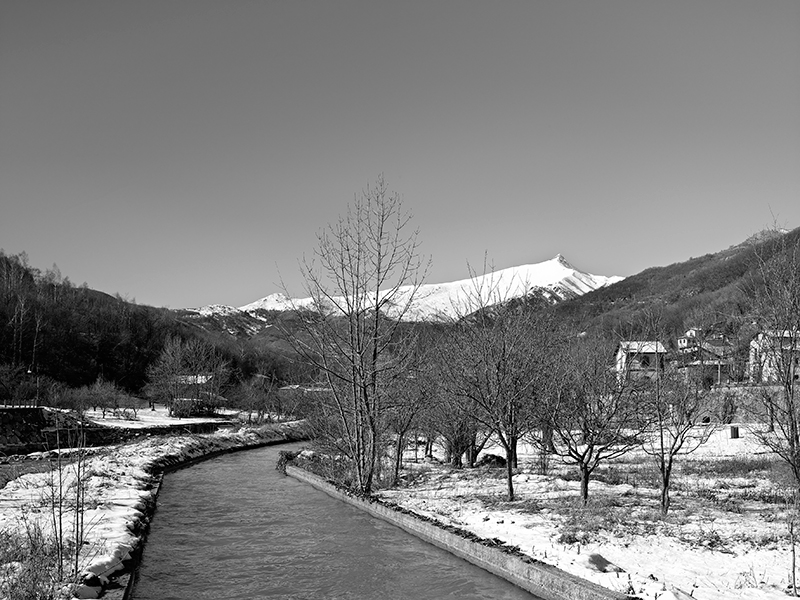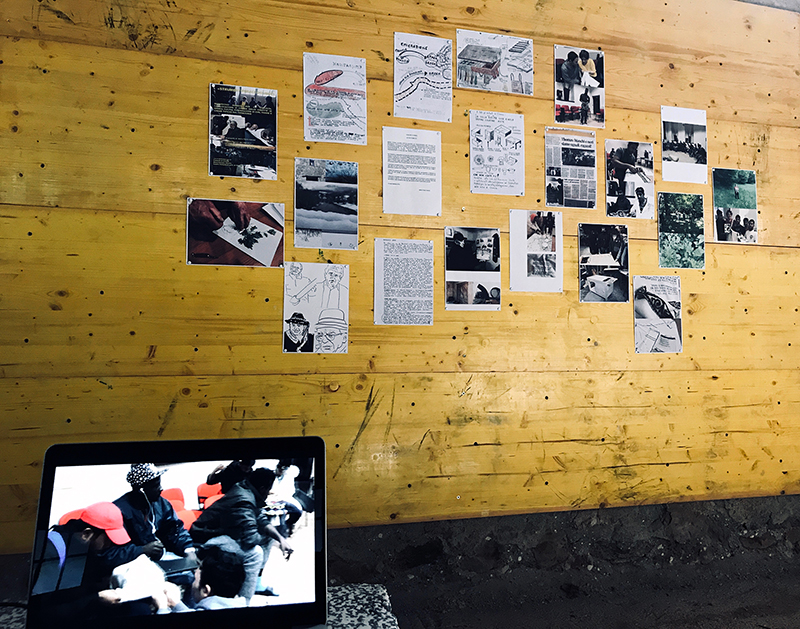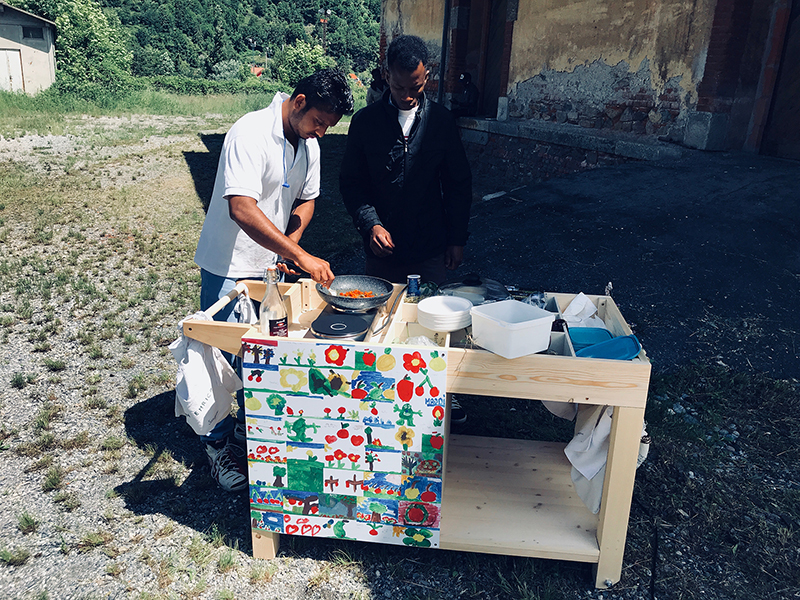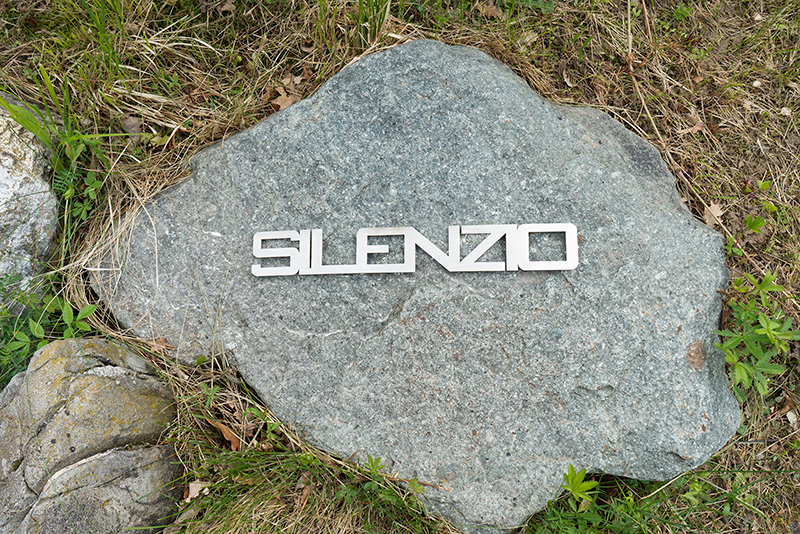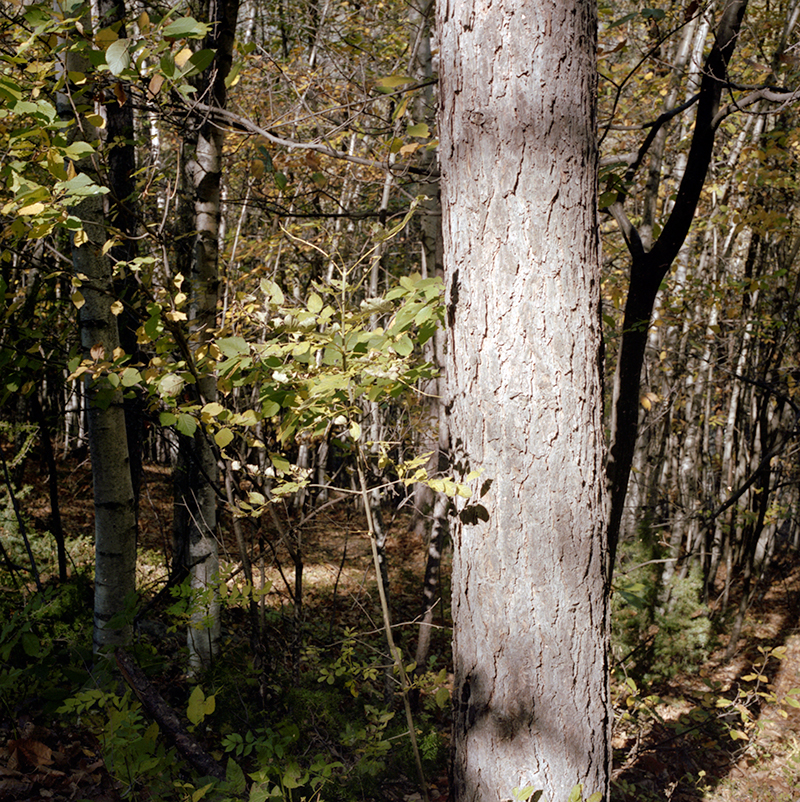Nasagonando Art Project
|
NASAGONANDO ART PROJECT, un progetto plug_in, a cura di Emanuele Piccardo, è realizzato nell’ambito del bando “Residenze d’artista” della Fondazione CRC e con il sostegno del Comune di Ormea. NASAGONANDO ART PROJECT, a plug_in project curated by Emanuele Piccardo, is realized within the framework of the “Artist Residencies” grant from the CRC Foundation and with the support of the Municipality of Ormea. Era il dicembre del 2016 quando siamo arrivato per la prima volta nella Alta Valle Tanaro e ho conosciuto il sindaco Giorgio Ferraris. Ormea era stata colpita dalla seconda alluvione dopo vent’anni dalla prima avvenuta nel 1994. It was December 2016 when we arrived for the first time in the Upper Tanaro Valley and met Mayor Giorgio Ferraris. Ormea had been hit by the second flood, twenty years after the first one in 1994. Il territorio distrutto, lacerato, necessitava di essere ricostruito non solo fisicamente ma anche socialmente e culturalmente. Così nasce il Nasagonando Art Project. The territory, destroyed and torn, needed to be rebuilt not only physically but also socially and culturally. Thus, the Nasagonando Art Project was born. L’obiettivo è rinascere attraverso l’arte contemporanea e il lavoro di artisti invitati a risiedere per un tempo limitato a Ormea per realizzare un progetto specifico che potesse innescare una serie di germogli per una nuova primavera ormeasca. Non so se l’obiettivo sia stato raggiunto, in quanto il territorio, compresso tra le montagne, è ostile e contro ogni fatto nuovo, a parte qualche rara eccezione (il sindaco e l’associazione culturale Ulmeta guidata da Aligi Michelis). Sarà dunque compito delle future generazioni, non necessariamente autoctone, a prendersi cura del progetto che in due anni ha visto coinvolti architetti, fotografi, artisti. Il primo anno, il 2017, ha avuto come unica protagonista la catastrofe alluvionale. Da lì si è partiti per definire un nuovo immaginario identitario nell’eterno incontro/scontro tra l’uomo e la natura. The goal is to be reborn through contemporary art and the work of artists invited to reside for a limited time in Ormea to carry out a specific project that could trigger a series of sprouts for a new Ormea spring. I don’t know if the goal has been achieved, as the territory, nestled between the mountains, is hostile and resistant to anything new, except for a few rare exceptions (the mayor and the cultural association Ulmeta led by Aligi Michelis). Therefore, it will be the task of future generations, not necessarily native, to take care of the project that in two years has involved architects, photographers, and artists. The first year, 2017, had the flood disaster as its sole protagonist. From there, we started to define a new identity in the eternal encounter/clash between man and nature.
Alessandro Chiossone, Roberta Volpone, Tòn-No, Deposito, Ormea 2017 Lo spopolamento di questa parte del Nord-Ovest, a causa dell’assenza del lavoro, ha alterato l’economia fragile di Ormea, luogo abbastanza vicino alla costa ligure e abbastanza lontano dalla parte produttiva cuneese. Infatti molte aree interne italiane subiscono la stessa sorte, ovvero la mancanza di politiche specifiche atte a valorizzare le eccellenze dei territori compresa l’arte contemporanea. The depopulation of this part of the Northwest, due to the lack of employment, has disrupted the fragile economy of Ormea, a place close enough to the Ligurian coast and far enough from the productive part of Cuneo. In fact, many inland areas in Italy suffer the same fate, namely the lack of specific policies aimed at enhancing the excellence of the territories, including contemporary art.
Parasite 2.0, Anthropos Melting, Ormea 2018 Nel 2017 ho tracciato un palinsesto di progetti, dal lavoro del duo di architetti Alessandro Chiossone e Roberta Volpone che hanno lavorato sul tema dei reperti “archeologici” alluvionali costituiti da grandi massi e radici nel progetto Tòn-No, alla ricerca fotografica Lungo il fiume che ho realizzato sul Tanaro; il lavoro dell’artista Maria Chiara Calvani, che ha indagato il rapporto tra migranti e tradizione, nel progetto Strumentiperaccogliere – Dispositivo nomade per la raccolta, catalogazione e studio delle erbette di Ormea, cucina, preparazione di cibi, tisane e creme tipiche del territorio; la campagna fotografica Ormea segni del paesaggio condotta da Marco Introini e infine l’opera Anthropos Melting del collettivo Parasite2.0 che dimostra “l’impotenza dell’azione umana e della sua impronta, destinata ad essere cancellata velocemente, ma non dimenticata, impressa nei violenti segni che la natura imprime nei suoi stessi paesaggi e territori”. In 2017, I outlined a schedule of projects, ranging from the work of the architect duo Alessandro Chiossone and Roberta Volpone, who focused on the theme of “archaeological” flood artifacts consisting of large boulders and roots in the Tòn-No project, to the photographic research “Along the River” that I carried out on the Tanaro River. There was also the work of the artist Maria Chiara Calvani, who explored the relationship between migrants and tradition in the project “Strumentiperaccogliere – Nomadic device for collecting, cataloging, and studying herbs from Ormea, cooking, preparing foods, herbal teas, and creams typical of the territory.” Additionally, the photographic campaign “Ormea Signs of the Landscape” conducted by Marco Introini and, finally, the artwork “Anthropos Melting” by the Parasite2.0 collective, which demonstrates “the impotence of human action and its footprint, destined to be quickly erased but not forgotten, impressed in the violent marks that nature imprints in its own landscapes and territories. Marco Introini, Ormea segni del paesaggio/Signs of the landscape, 2018 Maria Chiara Calvani, Strumentiperaccogliere – Dispositivo nomade per la raccolta, catalogazione e studio delle erbette di Ormea, cucina, preparazione di cibi, tisane e creme tipiche del territorio, Ormea 2018 In parallelo una serie di incontri e proiezioni di film sul tema uomo e natura, in collaborazione con il Cinema di Ormea, ha cercato di aprire orizzonti nuovi. Nel 2018 invece la necessità era indagare ancora in maniera più ristretta la relazione tra uomo e natura attraverso il tema del bosco, molto sentito dalla comunità locale. Ho invitato l’artista milanese Stefano Boccalini, allievo di Gianni Colombo e docente alla NABA, a lavorare al progetto. Lui ha proposto di lavorare con le parole. Individuare le parole che sono legate al bosco, è nato così Una parola sul bosco. Anche in questo caso come curatore e autore ho dialogato a distanza con Boccalini realizzando un vocabolario visivo fotografando i boschi attorno Ormea. Una parola sul bosco si è sviluppato insieme alla Scuola Forestale di Ormea per la selezione delle parole che Boccalini ha realizzato in acciaio inox e installato sulle pietre che compongono il giardino botanico, un vocabolario che rimarrà come memoria del bosco e dei suoi intrinseci significati. In parallel, a series of meetings and film screenings on the theme of man and nature, in collaboration with the Ormea Cinema, sought to open up new horizons. In 2018, the need was to investigate more specifically the relationship between man and nature through the theme of the forest, which is deeply felt by the local community. I invited the Milanese artist Stefano Boccalini, a student of Gianni Colombo and a lecturer at NABA, to work on the project. He proposed working with words, identifying words linked to the forest. Thus, “Una parola sul bosco” (A Word on the Forest) was born. In this case, as a curator and author, I engaged in a remote dialogue with Boccalini, creating a visual vocabulary by photographing the woods around Ormea. “Una parola sul bosco” developed in collaboration with the Ormea Forestry School for the selection of words that Boccalini crafted in stainless steel and installed on the stones that make up the botanical garden—a vocabulary that will serve as a memory of the forest and its intrinsic meanings. Stefano Boccalini, Una parola sul bosco, Giardino botanico, Ormea 2019 Emanuele Piccardo, Attraversare il bosco/To cross the woods, 2019
NASAGONANDO ART PROJECT curatela Emanuele Piccardo 8 dicembre 2017-30 giugno 2019 Ormea (Cuneo), varie sedi |
